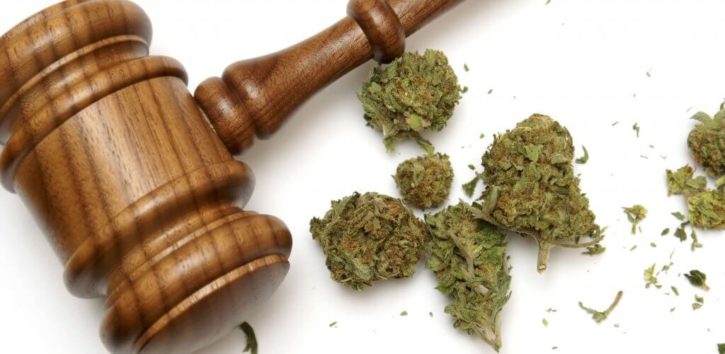Third Circuit Rules New Jersey Marijuana Law Lacks Private Right of Action to Enforce Employment Protections

A federal appellate court has ruled that a New Jersey law regulating recreational marijuana use does not grant job applicants the right to sue employers that rescind job offers after positive pre-employment drug tests for marijuana. The court found that the law does not provide a private right of action to enforce its employment protections. […]
DOJ Plans to Reclassify Marijuana From Schedule I to Lower-Risk Schedule III Drug

On April 30, 2024, following a months-long process, the U.S. Department of Justice (DOJ) circulated a proposal to reclassify marijuana from a Schedule I to a Schedule III controlled substance. This historic move—likely the most substantial change to federal drug policy in more than fifty years—would place marijuana amongst the likes of acetaminophen with codeine, […]
Weed at Work: Can Georgia Employers Still Drug Test?

Across the United States, a broad legal spectrum has developed regarding the use of marijuana, thus creating great uncertainty among employers that have long striven to maintain drug-free workplaces. Federally, marijuana still is classified as a prohibited Schedule I substance under the Controlled Substance Act. In recent years, many states have decriminalized marijuana, some limiting […]
Medical Marijuana Usage Is Not Protected Under the ADA, Vermont Federal Court Rules

On February 14, 2024, a judge of the U.S. District Court for the District of Vermont dismissed a plaintiff’s Americans with Disabilities Act (ADA) discrimination and failure-to-accommodate case, holding that his medical marijuana usage was not protected under the ADA (Skoric v. Marble Valley Regional Transit District). Quick Hits A federal district judge in Vermont […]
Stocking Naloxone in the Workplace: What Employers Need to Consider

It is well known that opioid overdoses have occurred at epidemic levels in the United States for years. According to the U.S. Centers for Disease Control and Prevention (CDC), opioid overdose deaths have increased from 21,089 in 2010, to 47,600 in 2017, to more than 80,000 in 2021 and 2022. As the number of deaths has […]
Right-to-Weed States: Assessing Impairment and Managing Employee Conduct in the Workplace

On May 9, 2023, the Washington state governor signed a law that will make it unlawful for employers to discriminate against hiring a person based on their marijuana usage, making Washington the latest state to become a right-to-weed state. With medical and recreational marijuana legalization spreading, a growing number of states are further implementing protections for […]
Majority of States Have Legalized Marijuana, but OSHA’s Post-Incident Drug-Testing Guidance Hasn’t Changed

As of May 1, 2023, marijuana had been legalized for medicinal or recreational use, or both, in thirty-eight states. Some 35–55 million Americans report using marijuana two or more times per month. According to published reports, drug tests administered by one large national testing laboratory returned the highest rate of marijuana positive tests since 1997. […]
DOJ Emphasizes Need for Individualized Assessments in Finding Indiana Nursing Board Violated ADA

On March 25, 2022, the U.S. Department of Justice (DOJ) found the Indiana State Board of Nursing violated Title II of the Americans with Disabilities Act (ADA) when it refused to allow a nurse taking medicine prescribed to treat opioid use disorder (OUD) from participating in the Indiana State Nursing Assistance Program (ISNAP). ISNAP rehabilitates and […]
PTC Launches New eTEST Scheduler

Pipeline Testing Consortium, Inc. has recently launched their new eTEST drug and alcohol test scheduler. Available for use to all PTC members, this fully electronic drug test scheduler allows users to schedule a drug or alcohol test for anyone in the United States without the need for a drug testing kit or paper chain of […]
What Is CBD Oil and Why Should Employers Care to Know?

Cannabidiol (CBD) is a nonintoxicating compound found in both marijuana and hemp that can be extracted and combined with oil for ingestion or inhalation through the use of a vaporizer. In recent months, retailers in many states have been marketing and selling CBD oil derived from hemp as a natural remedy for pain, anxiety, insomnia, […]
